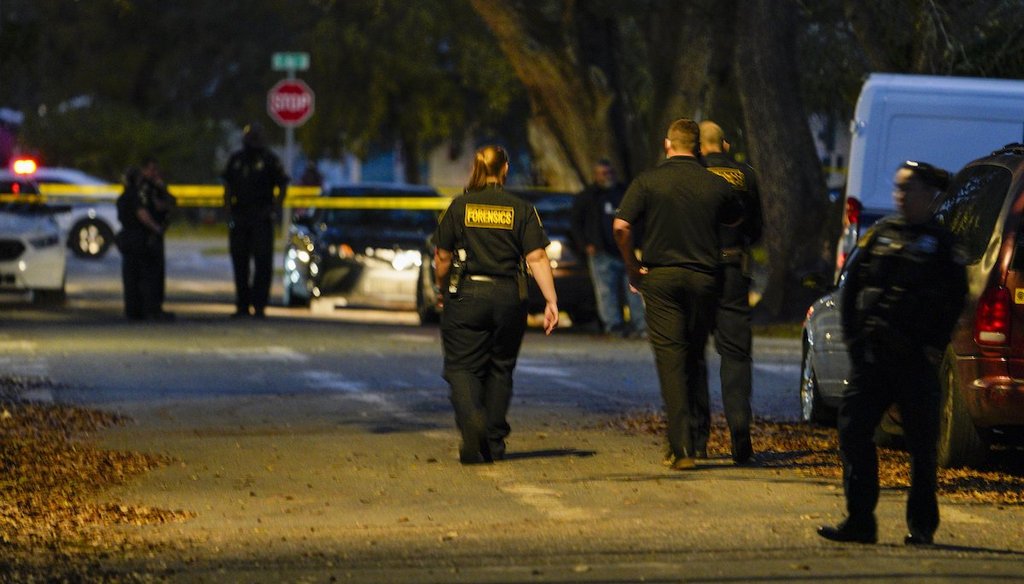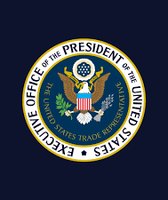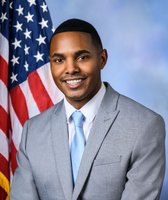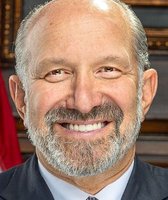Get PolitiFact in your inbox.

The scene of a deadly shooting in St. Petersburg, Fla., where three people were found dead. (Tampa Bay Times/Martha Asencio Rhine)
If Your Time is short
-
In America’s larger cities, murders rose sharply in 2020.
-
Murders rose most in communities where shootings were already more common and where poverty and unemployment are high.
-
The mix of the pandemic and the police response to racial justice protests may have played a role, but there isn’t enough hard data yet to prove a link.
-
Readily available guns provided fertile ground for violence, but don’t explain the higher 2020 death toll.
Completely apart from the bipartisan blame game over crime, there is the stark reality that in most American cities, murders have gone up.
One survey of America’s larger cities found that between 2019 and 2020, homicide deaths rose more than 30%. An analysis of 34 cities found a "historic increase."
Some Republicans say rising homicides are due to the "defund the police" movement and the failures of Democratic urban leaders. Some Democrats point the finger at the wide availability of guns and Republican resistance to police reform.
Those are the talking points. The real causes, experts say, are not so clear.
No one debates that last year was unique. There was the pandemic and the havoc it wreaked. There were the racial justice protests and, in some cities, periods of vandalism and looting.
Sign up for PolitiFact texts
What all that has to do with rising homicide rates is what mayors, citizens and criminologists are trying to figure out.
There are many possible explanations, but it will be months before we have enough hard data to bring the outlines of the driving forces into sharper relief.
In the meantime, the numbers we have show that beneath the national trend lines, there’s wide variation among cities, making it even more difficult to pinpoint causes.
City trends vary
A preliminary FBI crime report for 154 cities shows that murders rose 10% across the group in the first quarter of 2021 compared with a year earlier. But look closer and you find that the increase was concentrated in 40% of the cities. The remaining 60% saw murders drop or stay the same.
As far as Ben Frazier can tell, the problem predates 2020. Frazier, an activist in Jacksonville, Fla., heads up the Northside Coalition, a community group focused on stopping the shootings in the handful of neighborhoods where about two-thirds of the city’s murders take place. One ZIP code in that area has been dubbed "the killing fields."
"For us, 2019 was the pivotal year," Frazier said. "I can’t see a difference due to the pandemic. Because what we saw happen in 2020, started before."
In 2019, murders in Jacksonville went up 21%. The following year, 2020, the increase was less than half as much — 8%.
Frazier said he is hard pressed to find an explanation that doesn’t include the area’s extreme poverty.
"Half of the people are living below the federal poverty line," Frazier said."We have double-digit unemployment. The kids walk the streets in roving bands. It’s a very disappointing, depressing picture, to see so many young Black men with nothing to do."
And, Frazier said, there was ready access to weapons.
"I have nothing to point to as far as statistics, but I can only tell you that there were far too many guns in the hands of people who should not have them," he said.
A careful analysis of trends in 34 cities by the Council on Criminal Justice, an independent source of crime data, lends support to Frazier’s broader themes, but suggests that in many places, the mix of factors was more complicated.
"More disadvantaged cities — those with higher poverty and unemployment rates — experienced greater increases in homicide in 2020," the report said.
Guns have been readily available for some time, the report said, and there’s no clear evidence yet of a shift there that would explain a rise in murders in 2020.
The council’s study of 34 cities found a 24% increase in homicides in the first quarter of 2021, but it notes that three cities in its sample — New York, Chicago and Los Angeles — accounted for 40% of the increase.
With great circumspection, the report’s authors concluded that "while it is impossible to be certain, it is probable that the pandemic, protests, and other factors all combined to create a perfect storm of circumstances pushing homicide rates to record levels."
The hunt for an explanation turns on finding the shifts that incrementally made murder more likely.
The pandemic
COVID-19 caused a disproportionate number of deaths in Hispanic and Black communities. The Centers for Disease Control and Prevention noted the tight association between higher health risks and the markers of economic stress, such as lower incomes and higher unemployment.
"The pandemic hit especially hard in exactly those neighborhoods where a lot of violence happens anyway," said City University of New York criminologist Candace McCoy. "Services that connect with teens were shutting down. Families were hit with people getting sick, some of them dying. More young adults were left to themselves."
Criminologist Eileen Ahlin at Penn State-Harrisburg noted that the pandemic-driven economic downturn also mattered.
"Unemployment and declining mental health routinely affect crime rates," Ahlin said. "Last year we saw both at play."
There are signs that work-at-home policies added to domestic homicides. By one count, shooting deaths related to domestic violence rose 4% in 2020.
"Women were stuck at home with abusive spouses," McCoy said.
But as with homicides in general, trends varied widely from place to place, with some cities seeing decreases, and others reporting spikes in the range of 70% or higher, with no clear explanation for the differences.
Protests and policing
On top of the pandemic and the disruptions it brought, there were the nationwide protests spurred by the murder of George Floyd. Going back to the 2014 death of Michael Brown in Ferguson, Mo., there has been a running debate over whether such protests over police violence lead to less policing and more crime.
Criminologist and law professor Paul Cassell at the University of Utah said the confrontations between police and protesters played a role in 2020, because they made police less likely to engage with people who might commit violence.
"Police pulled back from the kinds of aggressive steps that are often needed to most effectively fight homicides," Cassell said.
Cassell also said that dealing with marches could have taken police away from other activities.
This line of thinking often melds with accusations that cities cut police budgets in response to protests.
That holds little water. Even as local governments struggled to balance their budgets in the midst of the pandemic, police spending went up, sometimes as a fraction of a city’s budget, but also in absolute terms.
Researchers disagree whether the protests themselves had any effect in causing police to pull back from everyday enforcement actions. It’s too early to know about 2020, but a detailed study of the so-called Ferguson Effect found no connection between protests, policing and crime.
Researchers Richard Rosenfeld at the University of Missouri-St. Louis and Joel Wallman at the Harry Frank Guggenheim Foundation counted arrests to measure police activity, and compared that with homicide rates. If the Ferguson Effect was real, they argued, homicide rates should go up in places where arrest rates went down.
They wrote that while there’s ample evidence that targeted policing does reduce crime, "we have found little evidence that the 2015 rise in big-city homicide rates resulted from declining arrest rates for violent, property, drug, weapon, and minor crimes."
At the same time, Rosenfeld and Wallman said greater mistrust of police might be a key driver. If people of color don’t think the police will treat them fairly, having more police might not help. Also, residents might hesitate to call police. Homicides could rise as people take matters into their own hands, they suggested.
Guns
Firearms are far and away the weapon of choice for murder, and sales of guns are up, so it might seem reasonable to link the two. In his response to rising crime, President Joe Biden focused on cracking down on illegal gun sales.
But there’s not a reliable correlation between the legal purchases of guns and increases in homicides.
Between 2006 and 2014, gun sales doubled, while the homicide rate fell by 25%.
While purchases skyrocketed during the pandemic, criminologist Aaron Chalfin at the University of Pennsylvania told us that guns used in crimes tend to be several years old. A surge in sales in 2020, or even 2019, wouldn’t necessarily translate into more killings last year.
"Guns and poverty are the conditions that create fertile ground, but they don't really help us out with the ‘why now?’ part of this phenomenon," Chalfin said.
Still, Chalfin thinks that the combination of the pandemic and racial justice unrest might have increased gun purchases in certain neighborhoods as residents acted to provide their own protection. He thinks it’s reasonable to infer that the police pulled back to some extent. The mix might explain the rise in homicides.
Except that murders began to rise in January and February, before either the pandemic or the protests started.
"There are limits to what we can infer," Chalfin said. "It's really hard to understand the world and all of its variations."
Our Sources
FBI, Quarterly data - Q1 2021, June 21, 2021
FBI, Crime data explorer, accessed July 2, 2021
FBI, Overview of Preliminary Uniform Crime Report, January–June, 2020, Sept. 15, 2020
White House, Remarks by President Biden and Attorney General Garland on Gun Crime Prevention Strategy, June 23. 2021
PBS, Frontline: A Handful of States Fueled a National Increase in Domestic Violence Shooting Deaths as COVID-19 Spread, June 2, 2021
Criminology and Public Policy, Did de-policing cause the increase in homicide rates?, May 2020
FBI, National Instant Criminal Background Check data, accessed July 13, 2021
Major Cities Chiefs Association, Violent crime survey: 2020 end of year, February 2021
Major Cities Chiefs Association, Violent crime survey: 2021 first quarter comparisons, May 2021
Council on Criminal Justice, Pandemic, Social Unrest, and Crime in U.S. Cities 2020 Year-End Update, Feb. 5, 2021
Congressional Research Service, Recent Violent Crime Trends in the United States, June 20, 2018
Florida Times-Union, Jacksonville shooting victim called ‘innocent’ by mother in FB post, Nov. 25, 2019
White House, Remarks by President Biden and Attorney General Garland on Gun Crime Prevention Strategy, June 23. 2021
PBS, Frontline: A Handful of States Fueled a National Increase in Domestic Violence Shooting Deaths as COVID-19 Spread, June 2, 2021
Criminology and Public Policy, Did de-policing cause the increase in homicide rates?, May 2020
FBI, National Instant Criminal Background Check data, accessed July 13, 2021
Jacksonville Sheriff’s Department, Murder data, accessed July 12, 2021
Florida Department of Law Enforcement, UCR Offense Data, accessed July 12, 2021
Bloomberg City Lab, Cities Say They Want to Defund the Police. Their Budgets Say Otherwise., Jan. 12, 2021
City Crime Stats, COVID and Crime: Key Findings, Dec. 31, 2020
SJ Quinney College of Law, University of Utah, Explaining the Recent Homicide Spikes in U.S. Cities: The 'Minneapolis Effect' and the Decline in Proactive Policing, September 2020
New York Times, With Homicides Rising, Cities Brace for a Violent Summer, June 1, 2021
Factcheck.org, House GOP’s Misplaced Blame for Rising Homicides, July 7, 2021
Vox, The rise in murders in the US, explained, Dec. 2, 2020
The Intercept, What drove the historically large murder spike in 2020?, Feb. 21, 2021
Washington Post, The complicated political jockeying over increases in violent crime, June 22, 2021
Washington Examiner, Biden shows he still doesn’t care about violent crime, June 24, 2021
Keisha Lance Bottoms, MSNBC, Interview, June 18, 2021
White House, Biden-Harris Administration Announces Comprehensive Strategy to Prevent and Respond to Gun Crime and Ensure Public Safety, June 23. 2021
Vox, Confronting the myth that "black culture" is responsible for violent crime in America, Sept. 1, 2016
PolitiFact, Facebook post makes unproven claim about police funding and homicides, May 28, 2021
PolitiFact, Ron DeSantis’ misleading claim about crime, police funding, May 4, 2021
PolitiFact, Some police budgets are increasing, but evidence of national trend falls short, June 18, 2021
Email exchange, Richard Rosenfeld, professor, Department of Criminology and Criminal Justice, University of Missouri-St. Louis, July 7, 2021
Email exchange, Paul Cassell, professor of criminal law , S.J. Quinney College of Law, University of Utah, July 6, 2021
Email exchange, Emma Vaughn, national press secretary, Republican National Committee, July 6, 2021
Interview, Candace McCoy, professor of criminal justice, City University of New York, July 6, 2021
Interview, Eileen M. Ahlin, associate professor of criminal justice, Penn State-Harrisburg, July 6, 2021
Interview, Ben Frazier, president, Northside Coalition of Jacksonville, July 11, 2021
Email exchange, Aaron Chalfin, assistant professor criminology, University of Pennsylvania, July 12, 2021






















































